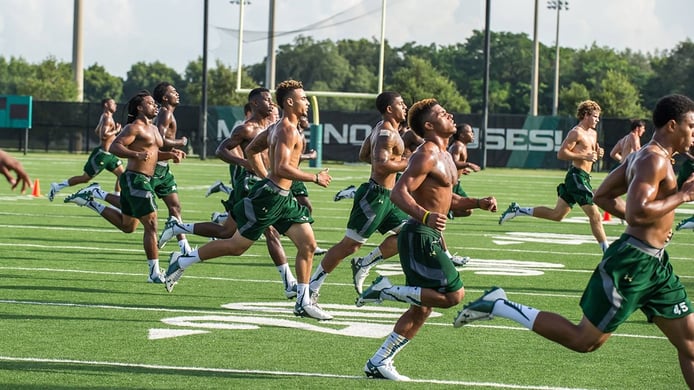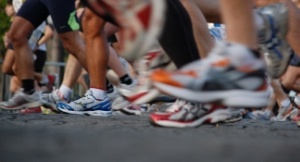Your Physiological Limits to Cardiovascular Endurance

Elite athletes have fantastic cardiovascular endurance. They can sustain cardiovascular exercise, such as swimming, running, cycling, etc, over an extended period of time. All too often, we refer to lung capacity as one of the primary drivers of cardiovascular fitness, when in reality, there are several larger factors that determine one’s endurance.
Let’s analyze the primary contributors to your fitness.
An athlete’s ability to climb several flights of stairs without feeling winded is not a direct result of his or her lung capacity. In fact, studies show modest differences between an exerciser and a non-exerciser when it comes to total lung capacity (TLC- the greatest volume of air you can inspire in one breath) or forced vital capacity (FVC- the greatest volume of air you can blow out). If the lungs don’t physically expand much more than those of a non-athlete, what is responsible for the athlete’s steady breath as compared to a non-athlete’s shortness of breath during the same exercise?
Efficient Use of Oxygen
Athletes with great cardio-respiratory function are extremely efficient at performing exercise because they are efficient users of oxygen. Their bodies are great at pulling oxygen into the bloodstream and delivering it to working muscles that need oxygen for metabolic processes.
It is thus not the lung capacity or volume of air that contributes to one’s cardiovascular fitness, but how efficient the person is at extracting, transporting, and utilizing oxygen that matters.
Cardiac Output
Maximal oxygen uptake, or VO2 max, is one of the general markers of cardiovascular endurance. It loosely reveals how efficient your body is at extracting oxygen from the air and using it in working muscles. Even VO2 max, however, does not paint the whole picture. That task belongs to cardiac output. Your cardiac output is the reason why an elite athlete can steadily hop up a few flights of stairs while the untrained individual gets “winded”.
Cardiac output is a common physiology term that refers to the heart’s ability to pump blood to tissues (and therefore deliver oxygen). More simply, cardiac output = stroke volume (amount of blood pumped out of the heart in each heartbeat) x heart rate (heartbeats per minute). The more blood you can squeeze out to your tissues in each heartbeat, the stronger your heart is and the more efficient you are at delivering oxygen and nutrients to muscles.
Elite athletes also have a higher overall blood volume, enabling greater oxygen transport and even more efficient gas exchange at working muscles. They can therefore remove carbon dioxide more efficiently, which is a waste product that accumulates in muscle tissue during exercise.
Takeaway
The idea of having a strong set of lungs is rooted in 1) the efficient use of oxygen and 2) a strong heart. With training, athletes can increase their ability to extract oxygen from the air, the speed at which oxygen is delivered to muscles, and the rate of energy metabolism in muscle tissue that produces quicker movements and overall speed and power. These adaptations help the athlete attain true cardiovascular fitness.
Understanding your physiology is a key component to success in elite athletics! For related exercise physiology articles, check out our BridgeBlog or visit us at BridgeAthletic to learn more about your performance potential!

Reference:
- Lore of Running; Dr. Tim Noakes
- http://www.livestrong.com/article/480176-the-effects-of-exercise-on-lung-capacity/
Related Posts

The Best Bench Press Variation You’re...
This post is part of our Coaches Corner series with Taylor Rimmer. Taylor is NSCA-CPT, StrongFirst...

Does Powerlifting Harm Heart Health?
A recent study has discovered that a 12-week supervised strength training program (SSTP) may result...
-1.png)
Barefoot Running: Is It For You? |...
Run Free: Consider Less Cushion
Updated October 2020:
With more athletes looking for ways to...



